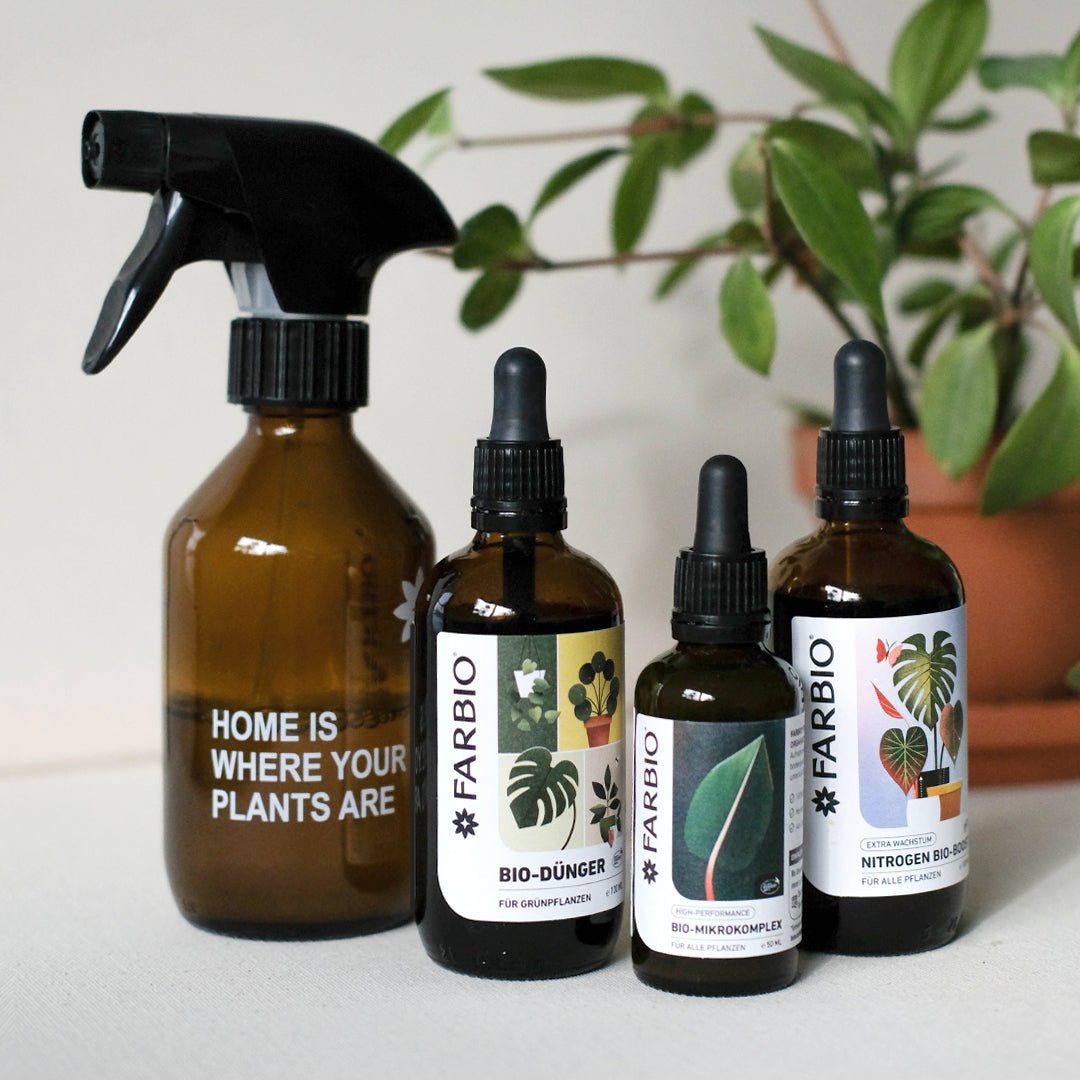Growing cannabis requires a professional approach to achieve the best yield. Plants need a balanced mix of nutrients for successful flowering and ultimately a high-quality end product. One of the most important factors is using the right fertilizer and the correct dosage. However, correct application is also crucial: An insufficient dose or an overdose of fertilizer can harm your plant. For this reason, it's important to understand how plants absorb nutrients properly. This article covers important information about growing and fertilizing cannabis—so you'll be well-informed when it's legalized in 2024!
Cannabis cultivation – these are the most important factors
In summary, successful cannabis cultivation requires careful strain selection, the right cultivation system, optimal soil conditions, proper nutrient supply, and adequate irrigation. Considering all of these factors is important if you want to harvest high-quality marijuana.
Nutrients for the cannabis plant: nitrogen, phosphorus and potassium
A cannabis plant requires a variety of nutrients to grow optimally and ensure healthy development. The three main nutrients are called macronutrients: nitrogen (N), phosphorus (P), and potassium (K).
Nitrogen is crucial for plant growth because it is responsible for the formation of chlorophyll. Phosphorus promotes root development, flower formation, and seed production. Potassium helps the plant use water efficiently, strengthens cell structure, and supports metabolism.
In addition, the cannabis plant also requires other essential mesonutrients (calcium, magnesium, sulfur) as well as micronutrients such as iron, zinc, manganese, and boron. These micronutrients play an important role in various physiological processes in the plant, including photosynthesis, water uptake, and pH regulation.

Macronutrients, mesonutrients and micronutrients for cannabis plants
To ensure that cannabis plants receive sufficient nutrients, special fertilizers for cannabis cultivation can be used. These contain a balanced mix of macro- and micronutrients that meet the specific needs of the plant.
What are the nutrient requirements of plants?
The nutrient requirements of a cannabis plant can vary depending on the growth stage and individual conditions. The exact nutrient requirements depend on factors such as the plant variety, plant size, growing system (indoor or outdoor), soil pH, and environmental conditions. It's important to monitor the plant's needs and adjust fertilizer levels accordingly to avoid deficiencies or over-fertilization.
Fertilizers for the different stages - consider the growth phase and flowering phase when fertilizing
The main nutrients a cannabis plant needs are nitrogen (N), phosphorus (P), and potassium (K). During the vegetative phase, when the plant is primarily growing and producing leaves, it requires a higher percentage of nitrogen to promote growth. During the flowering phase, when the plant is forming buds, it needs more phosphorus and potassium to support flower formation and resin production.

When should you start fertilizing cannabis?
Generally, it's advisable to start fertilizing when the young plants develop their first true leaves. During the first few weeks after germination, the soil usually contains enough nutrients to sustain the plants. However, as soon as the first signs of nutrient deficiency appear, such as light green leaves or yellowing, it's time to start fertilizing.
Organic or mineral fertilizer?
Choosing between organic and mineral fertilizers is a personal decision based on personal preference, environmental awareness, and specific growing conditions. It's important to weigh the pros and cons of each method and choose the best option for your cannabis cultivation.
Organic fertilizers are natural and provide nutrients in a slow, controlled way, promoting soil fertility. They offer a sustainable option and can improve the taste and quality of the crop.
Mineral fertilization, also known as synthetic or inorganic fertilization, involves the use of chemically produced fertilizers. The nutrients are readily available, but over-fertilization can occur more easily.
Buying cannabis fertilizer – everything you need to know
Overall, the quality of fertilizers plays a crucial role in maximizing the potential of cannabis plants and producing high-quality buds. It's advisable to use high-quality fertilizers specifically developed for cannabis cultivation that best meet the needs of the plants. The quality of fertilizers can also influence the development of aromas and terpenes, which are responsible for the taste and aroma of cannabis flowers.
It's important to regularly monitor plants and their response to fertilization. Signs of overfertilization include burnt and discolored leaf tips. These should be identified, and causes such as an overaccumulation of salts in the substrate should be treated and avoided.

Our FARBIO® cannabis fertilizers support you in nourishing your hemp plants! Most importantly, they contain natural ingredients and are completely chemical-free, ensuring you can enjoy your harvest safely.
Nitrogen Bio-Boost provides an extra boost of nitrogen during the vegetative phase, when the plant primarily produces leaves. It's a foliar fertilizer that's simply sprayed onto the leaves.
Use the organic microcomplex to ensure sufficient trace elements and thus the healthy development of your cannabis plants.
Want to make growing even easier? Discover the starter kit for complete care for your cannabis plants.
You can also find all FARBIO® products on Amazon ( Click here ).

How often and how much should you fertilize so that your plants thrive?
During the vegetative phase, when the plant is primarily growing and producing leaves, it generally requires more frequent fertilization. Fertilizing every one to two weeks is recommended, depending on the fertilizer used.
During the flowering phase, when the plant is forming buds, a slightly more cautious fertilization is required. During the first few weeks of the flowering phase, you can continue to fertilize every one to two weeks. During the final weeks of the flowering phase, when the buds are developing, fertilization should be gradually reduced to ensure the plant achieves good aroma development and ripening.














